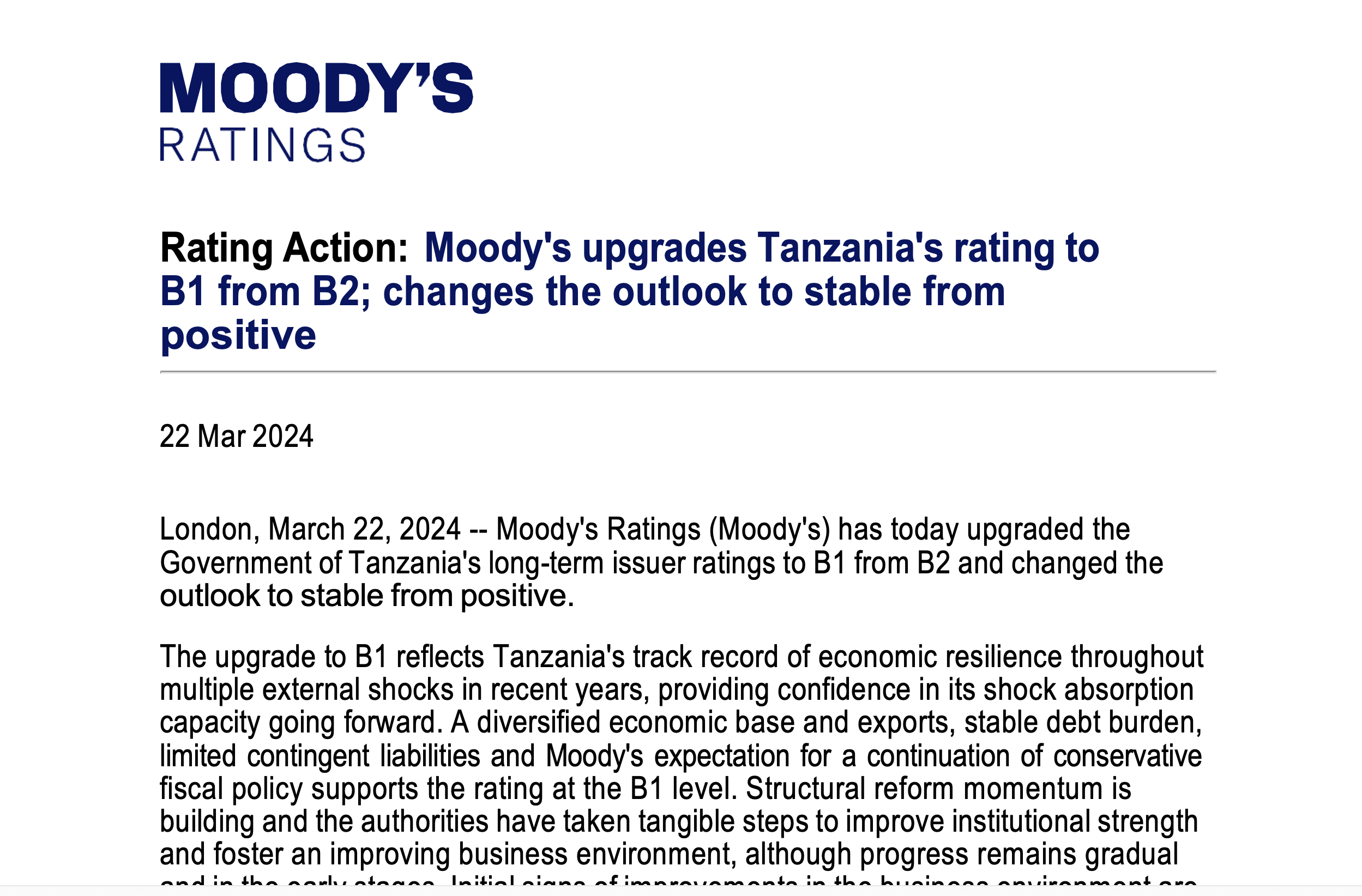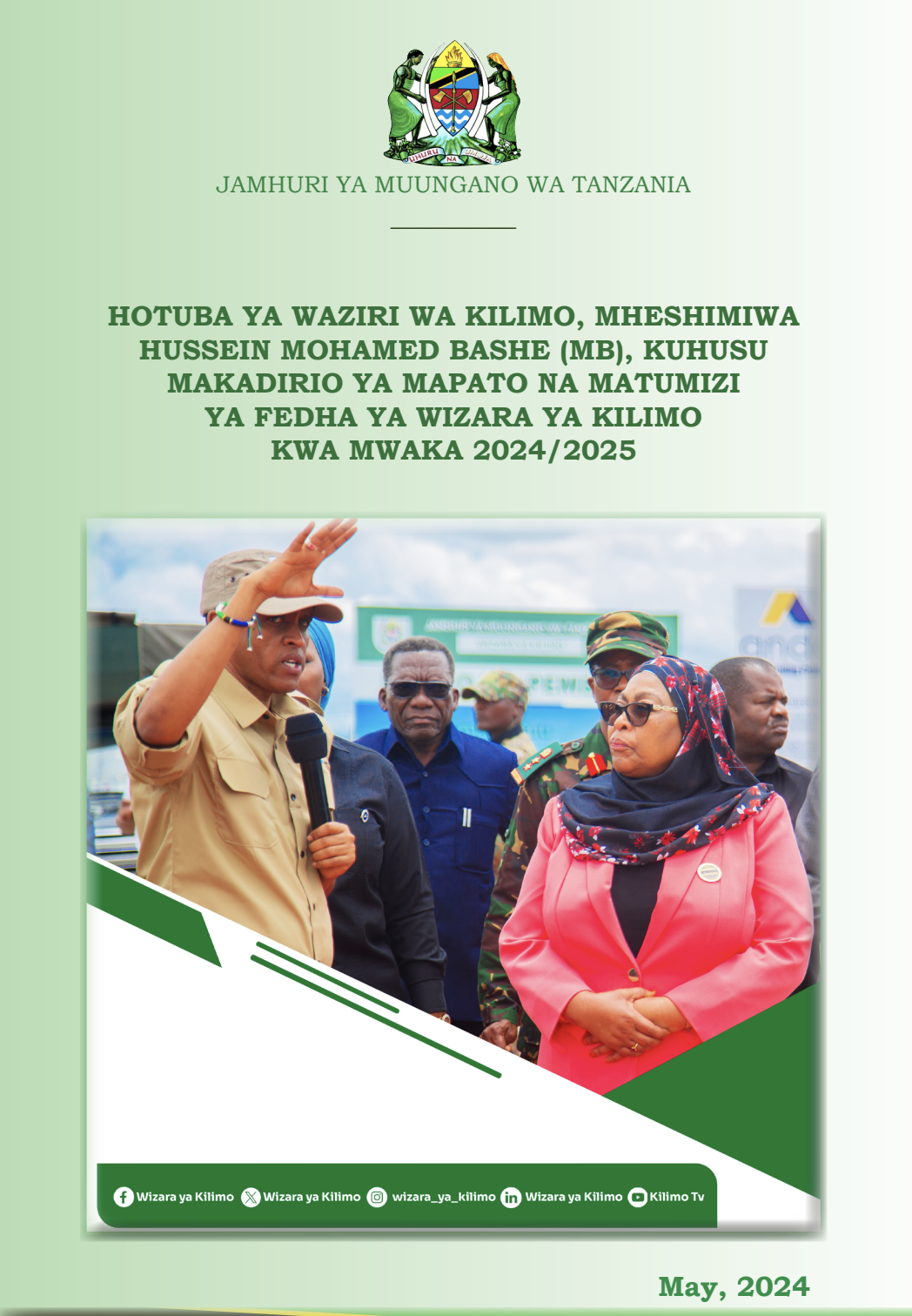Tanzania: 20 critical issues presented in the budget speech for the Ministry of Livestock and Fisheries
Table 1: Milk Production and Processing
| Category | 2022/2023 | 2023/2024 | Percentage Increase |
|---|---|---|---|
| Milk Production | 3.60 billion liters | 3.97 billion liters | 10.3% |
| Milk Processed | 77.90 million liters | 81.80 million liters | 5.01% |
| Unprocessed Milk | 3.52 billion liters (97.8% of production) | 3.89 billion liters (97.9% of production) | 10.5% |
| Collection Centers | 246 centers | 258 centers | 4.9% |
| Milk Collected | 71.80 million liters | 93.40 million liters | 30.1% |
Source: Ministry of Livestock and Fisheries Budget Speech 2024 .
Table 2: Meat Production by Type (2022/2023 vs 2023/2024)
| Type of Meat | 2022/2023 (Tons) | 2023/2024 (Tons) | Percentage Increase |
|---|---|---|---|
| Beef | 544,983.8 | 612,808.5 | 12.5% |
| Goat Meat | 91,893.8 | 134,403.35 | 46.3% |
| Sheep Meat | 21,888.05 | 28,290.00 | 29.3% |
| Chicken Meat | 96,915.6 | 132,442.28 | 36.7% |
| Pork | 47,583.1 | 55,912.42 | 17.5% |
Source: Ministry of Livestock and Fisheries Budget Speech 2024 .
Table 3: Livestock Numbers (2019 – 2023)
| Type of Livestock | 2019 | 2020 | 2021 | 2022 | 2023 |
|---|---|---|---|---|---|
| Cattle | 32,186,600 | 33,928,391 | 35,256,637 | 36,584,883 | 37,913,129 |
| Goats | 20,000,000 | 24,568,396 | 25,574,446 | 26,580,497 | 27,586,547 |
| Sheep | 5,535,468 | 8,516,990 | 8,802,462 | 9,087,935 | 9,373,407 |
| Pigs | 2,015,600 | 3,208,495 | 3,439,362 | 3,670,229 | 3,901,096 |
| Poultry | 79,134,500 | 87,659,580 | 92,799,956 | 97,940,332 | 103,080,708 |
Source: Ministry of Livestock and Fisheries Budget Speech 2024 .
Table 4: Fish Production by Water Body (2023/2024)
| Water Body | Fishermen | Vessels | Weight (Tons) | Value (TZS) | Percentage Contribution |
|---|---|---|---|---|---|
| Lake Victoria | 102,779 | 31,074 | 265,412 | 1,822,962,901 | 61.84% |
| Lake Tanganyika | 29,571 | 11,963 | 78,130 | 536,630,632 | 18.21% |
| Lake Nyasa | 5,550 | 2,632 | 10,341 | 71,025,557 | 2.41% |
| Lake Rukwa | 3,428 | 1,786 | 5,082 | 34,903,550 | 1.18% |
| Mtera Dam | 1,738 | 998 | 5,275 | 36,227,736 | 1.23% |
| Nyumba ya Mungu Dam | 783 | 432 | 5,620 | 38,599,022 | 1.31% |
| Coastal Waters | 53,035 | 9,242 | 57,590 | 395,553,241 | 13.42% |
| Others | 1,591 | 693 | 1,719 | 11,806,914 | 0.40% |
Source: Ministry of Livestock and Fisheries Budget Speech 2024 .
Table 5: Revenue Collection (2023/2024)
| Revenue Source | Annual Estimate (TZS) | Actual Collection (TZS) | Efficiency (%) |
|---|---|---|---|
| Export Fee | 415,957,500 | 322,040,636 | 77.42% |
| Veterinary Charges | 13,607,000,000 | 8,705,162,500.64 | 63.98% |
| Compound Fee | 350,000,000 | 258,617,744.88 | 73.89% |
| AHMP Fees | 225,000,000 | 202,898,585.05 | 90.18% |
| Livestock Movement Permit | 16,025,000,000 | 6,685,211,560.63 | 41.72% |
| Livestock Market Fees | 8,757,444,535 | 5,391,307,477.22 | 61.56% |
| Sale of Semen and Liquid Nitrogen | 908,199,322 | 224,093,600.00 | 24.67% |
| Sale of Heifers | 1,513,665,536 | 726,374,175.00 | 47.99% |
| Sale of Seeds and Hay | 302,733,107 | 70,537,850.00 | 23.30% |
| Total | 42,105,000,000 | 22,586,244,129.42 | 53.64% |
Source: Ministry of Livestock and Fisheries Budget Speech 2024 .
1. Increase in Milk Production
The budget highlighted a significant increase in milk production from 3.60 billion liters in 2022/2023 to 3.97 billion liters in 2023/2024, representing a 10.3% growth. This increase is attributed to improved dairy farming practices and enhanced extension services.
2. Enhanced Milk Processing
Processed milk volumes rose from 77.90 million liters to 81.80 million liters, showing a 5.01% increase. This improvement is due to investments in processing facilities and better market linkages.
3. Expansion of Milk Collection Centers
The number of milk collection centers increased from 246 to 258, enhancing the infrastructure for milk collection and reducing post-harvest losses.
4. Boost in Meat Production
Meat production grew from 803,264.3 tons in 2022/2023 to 963,856.55 tons in 2023/2024, a 16.7% increase. This growth is driven by better livestock management and market expansion.
5. Improvement in Animal Health Services
A total of 616,070,986 doses were used to vaccinate livestock against 13 priority diseases by April 2024, reducing disease incidence and improving livestock productivity.
6. Increased Production of Animal Feed
Production of processed animal feed increased from 1.58 million tons to 1.88 million tons, addressing the growing demand for quality feed and supporting livestock productivity.
7. Expansion of Artificial Insemination Services
The budget emphasized the enhancement of artificial insemination services, with 178 inseminators trained to provide these services, aiming to improve livestock breeds and productivity.
8. Development of Livestock Breeding
The government plans to distribute 60 Brahman bulls to livestock groups and build the capacity of local authorities to provide insemination services, aiming to improve livestock genetics.
9. Support for Fisheries Sector
Investments in the fisheries sector included the rehabilitation of the Moa fish market and the installation of three ice-making machines to enhance the quality and reduce post-harvest losses of fish products.
10. Promotion of Fish Farming
The government continued to support fish farming by providing concessional loans for fish farming equipment and inputs, constructing demonstration farms, and distributing 270 fish cages.
11. Strengthening Fishery Management
Training was provided to 1,328 members of Community Fisheries Management Groups on resource management, conflict resolution, leadership, and financial management.
12. Enhancing Animal Welfare
The budget included measures to improve animal welfare, such as the establishment of the Nsimbo Livestock Research Center and the appointment of animal welfare inspectors.
13. Boosting School Milk Programs
The government plans to continue enhancing the School Milk Program to improve children’s nutrition and stimulate demand for dairy products.
14. Investment in Livestock Infrastructure
The budget allocated funds for the development of a livestock guest house in Mkata Ranch, improving essential livestock infrastructure such as feed, water, and extension services.
15. Addressing Climate Change
The budget includes initiatives to mitigate climate change impacts, such as improving livestock breeds, enhancing pasture availability, and controlling livestock diseases.
16. Strengthening Veterinary Services
The budget emphasized enhancing veterinary services, including establishing regulations and appointing veterinary officers at regional and district levels.
17. Improving Fishery Infrastructure
Plans to complete the construction of the Kilwa Masoko fishing port and other fish markets and landings to support the fisheries sector were outlined.
18. Promoting Private Sector Investment
The budget encourages private sector investment in livestock and fisheries by identifying new investment areas and linking farmers and fishers with financial institutions.
19. Enhancing Quality Control
The government continues to improve the quality and safety of fish products by providing modern equipment and infrastructure for fish processing and preservation.
20. Training and Capacity Building
The budget includes ongoing training and capacity building for stakeholders in the livestock and fisheries sectors to enhance productivity and sustainability.
Here is the full budget speech-


